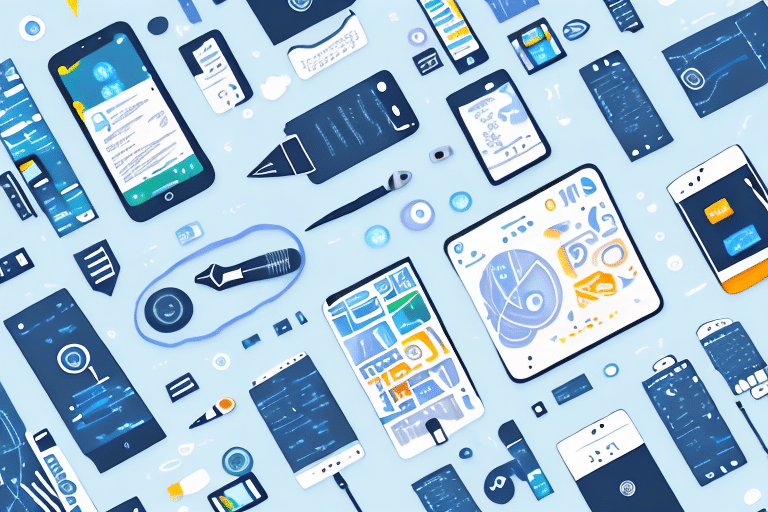Strong internal communication is the backbone of every successful organization. It ensures employees are aligned, engaged, and motivated while reducing confusion and silos. According to the Holmes Report, poor workplace communication costs U.S. businesses over $37 billion annually. On the flip side, McKinsey research shows productivity improves by 20–25% in organizations with connected employees (McKinsey). In this article, we’ll explore 20 internal communication examples that show how companies use different channels, tools, and software platforms to connect their people. Along the way, we’ll highlight how an employee communication platform can bring these examples to life, streamline processes, and deliver measurable results.
Why Internal Communication Examples Matter
Clear, consistent internal communication boosts employee engagement, strengthens culture, and improves productivity. For example, Gallup finds highly engaged teams show 21% greater profitability (Gallup). Likewise, Edelman Trust Barometer research shows that 81% of employees expect frequent updates from leadership (Edelman). Moreover, Dynamic Signal found that 80% of U.S. employees feel stressed because of poor communication. In addition, Forbes notes that poor communication is one of the top three reasons employees quit their jobs (Forbes). Therefore, these examples will help you see how modern internal communication platforms turn theory into practice and deliver real outcomes.
👉 For more context, explore our guide to 5 Essential Internal Communication Tools & Software.
Types of Internal Communication
Not all companies use the same methods. Therefore, it is important to understand the main types of internal communication every organization should consider. Additionally, combining several of these approaches often leads to stronger results:
- Top-down communication – Leadership updates, strategy announcements, company-wide news.
- Employee-to-management communication – Feedback channels, surveys, suggestion boxes.
- Peer-to-peer communication – Recognition programs, collaboration tools, informal chats.
- Informal and social communication – Coffee chats, team bonding, social events.
- Change announcements – Mergers, relocations, organizational changes.
- Onboarding communication – Pre-boarding messages, first-week introductions, new hire guides.
- Campaign communication – Coordinated internal campaigns around product launches, marketing pushes, or policy rollouts.
- Rewards and recognition communication – Celebrating employees with shoutouts, perks, or value-driven rewards.
- Information sharing – Training materials, FAQs, knowledge bases, intranet portals.
- Crisis communication – Urgent, multi-channel alerts to keep employees safe.
👉 Many organizations combine several of these types within one internal communication platform for efficiency.
Quick list for reference: Top-down, employee-to-management, peer-to-peer, informal/social, change, onboarding, campaign, recognition, information, and crisis communication.
Why Internal Comms Is Challenging
Even though the importance of strong internal communication is obvious, many leaders still struggle to get it right. Common barriers include:
- Too many fragmented channels, which leads to lost information.
- Outdated tools (noticeboards, letters, siloed apps) with poor reach.
- Low feedback visibility — employees can’t easily share opinions.
- Lack of leadership buy-in, which prevents sustained investment.
Research by Ragan Communications highlights that 60% of internal comms professionals struggle to measure effectiveness, underscoring why these barriers persist. However, with the right strategy and platform, these challenges can be solved effectively and consistently.
How Leaders Can Use Examples to Drive Business Goals
Business leaders often underestimate the ROI of internal communication. Nevertheless, the impact is clear:
- Engaged employees are 87% less likely to leave their organization (Corporate Leadership Council).
- Replacing an employee can cost up to 3x their annual salary (SHRM).
- Strong internal communication directly boosts productivity and reduces costly turnover.
In fact, Gartner research shows that companies with highly effective communication practices enjoy 47% higher shareholder returns (Gartner). Therefore, by learning from these internal communication examples, leaders can connect communications directly to goals like cost reduction, employee retention, and productivity improvements.
20 Fresh Internal Communication Examples
Below are the detailed descriptions, outcomes, and takeaways for each example. Notice how transition words emphasize flow between examples:
Healthcare Daily Huddles
In hospitals, shift-start huddles ensure critical updates reach nurses and doctors. Outcome: reduced medical errors by 18%. Takeaway: As a result, short, consistent meetings create alignment and improve communication efficiency.
Retail Mobile Scheduling
A major retailer replaced bulletin boards with a mobile scheduling app. Outcome: 97% of staff accessed schedules instantly. Takeaway: Consequently, meeting employees where they are — on mobile — is particularly powerful for frontline and deskless employees, who may not have access to corporate email or intranets.
Finance Leadership Blogs
A bank’s executives publish weekly blogs to explain strategy in plain language. Outcome: +22% employee trust in leadership. Takeaway: Furthermore, visible, authentic leadership matters, especially when communication is transparent and frequent.
Hospitality Gamified Learning
A hotel group introduced gamified learning modules. Outcome: 95% completion of training within 30 days. Takeaway: As a result, gamification increases adoption and improves knowledge retention.
Nonprofit Volunteer Recognition
Digital recognition walls highlight volunteer achievements. Outcome: Engagement scores jumped 30%. Takeaway: Therefore, recognition builds loyalty and creates a positive internal culture.
Tech Hackathons
A SaaS company hosts cross-functional hackathons. Outcome: Prototypes delivered 40% faster. Takeaway: In addition, innovation thrives when communication is open and collaborative.
Logistics Crisis Alerts
Logistics firms use SMS for urgent delays or safety issues. Outcome: Delivery delays reduced 25%. Takeaway: Consequently, SMS is unmatched for urgency. Therefore, a strong crisis communication strategy should include multi-channel alerts (SMS, push, email, signage) and acknowledgment tracking.
Education Staff Forums
Universities launched staff forums for open dialogue. Outcome: Turnover dropped 15%. Takeaway: As a result, peer-to-peer channels increase belonging and help retain staff.
Manufacturing Digital Kiosks
Plants use floor kiosks for shift updates. Outcome: 93% acknowledgment rates. Takeaway: In other words, physical digital signage bridges gaps and is especially effective for deskless employees who lack regular device access.
Insurance Video Explainers
Short explainer videos clarify policy updates. Outcome: 35% higher comprehension scores. Takeaway: Thus, visual learning outperforms text and enhances clarity.
Airline Safety Apps
Airlines empower crew with safety reporting apps. Outcome: Incidents reduced 20%. Takeaway: Accordingly, bottom-up reporting builds accountability and ensures safety.
Public Sector Scorecards
Agencies publish scorecards on intranets. Outcome: Public trust rose 18%. Takeaway: Therefore, transparency drives credibility and demonstrates accountability.
Energy Feedback Channels
Utilities offer always-on anonymous surveys. Outcome: Positive sentiment increased 25%. Takeaway: In summary, employees speak up when safe. Measuring feedback participation alongside retention and sentiment scores provides a clearer ROI picture than just email open rates.
Telecom Multilingual Push
Telecom firms use auto-translated push messages. Outcome: Satisfaction scores improved 30%. Takeaway: As a result, inclusive communication strengthens reach and fosters equity.
Healthcare Recognition Points
Hospitals run recognition programs with points redeemable for perks. Outcome: Retention increased 12%. Takeaway: Moreover, tangible rewards motivate and support a culture of appreciation.
Construction Safety Campaigns
Daily campaigns share quick safety reminders. Outcome: Accidents dropped 22%. Takeaway: Consequently, repetition reinforces safety culture and awareness.
Pharma Change Hub
Pharma companies build video-based change hubs during reorganizations. Outcome: Employee anxiety fell 33%. Takeaway: In conclusion, centralized resources ease transitions. Planning change communication should follow a phased framework: pre-announcement (context), announcement (multi-channel), ongoing updates, and follow-up feedback.
Banking Chatbots
Banks deploy AI chatbots for HR and IT queries. Outcome: Support tickets dropped 28%. Takeaway: Therefore, AI improves responsiveness and reduces administrative burden.
Utilities Recognition Newsletters
Monthly newsletters spotlight staff contributions. Outcome: Engagement rose 10%. Takeaway: Additionally, regular recognition sustains morale and motivates teams.
Consulting Mentorship Updates
Consulting firms send structured mentorship updates. Outcome: Participation doubled. Takeaway: In short, clear communication drives career development and knowledge transfer.
What Great Internal Comms Examples Have in Common
- First, they identified a clear communication challenge.
- Second, they chose tools that matched workforce type (frontline, hybrid, remote).
- Third, they encouraged two-way communication and feedback.
- Fourth, they tied comms efforts to measurable outcomes.
- Finally, they scaled successful approaches across the organization.
Comparison of Internal Communication Examples
| Example | Industry / Context | Communication Type | Tool / Channel | Outcome |
|---|---|---|---|---|
| Daily Huddles | Healthcare | Top-down | Morning meetings | -18% errors |
| Mobile Scheduling | Retail | Top-down | Mobile app | 97% schedule access |
| Leadership Blogs | Finance | Top-down | Weekly blog posts | +22% trust |
| Gamified Learning | Hospitality | Training | App gamification | 95% completion |
| Volunteer Recognition | Nonprofit | Peer-to-peer | Recognition wall | +30% engagement |
| Hackathons | Tech | Cross-functional | Hackathon platform | +40% faster prototyping |
| Crisis Alerts | Logistics | Crisis comms | SMS | -25% delays |
| Staff Forums | Education | Cross-functional | Forums | -15% turnover |
| Digital Kiosks | Manufacturing | Top-down | Kiosks | 93% acknowledgments |
| Video Explainers | Insurance | Top-down | Short videos | +35% comprehension |
| Safety Apps | Airline | Bottom-up | Safety app | -20% incidents |
| Scorecards | Public sector | Top-down | Scorecards | +18% trust |
| Feedback Channels | Energy | Bottom-up | Always-on surveys | +25% sentiment |
| Multilingual Push | Telecom | Top-down | Translated push | +30% satisfaction |
| Recognition Points | Healthcare | Peer-to-peer | Rewards program | +12% retention |
| Safety Campaigns | Construction | Change comms | Daily reminders | -22% accidents |
| Change Hub | Pharma | Change mgmt | Hub + videos | -33% anxiety |
| Chatbots | Banking | Cross-functional | AI chatbot | -28% tickets |
| Recognition Newsletters | Utilities | Peer-to-peer | Email newsletters | +10% engagement |
| Mentorship Updates | Consulting | Career growth | Mentorship comms | 2x participation |
How Platforms Enable These Examples
An employee communication platform brings these examples together in one hub. It not only unifies communication but also ensures consistent reach. Moreover, it drives measurable outcomes. Features include:
- Segmentation: Deliver personalized messages by role, region, or shift.
- Multichannel delivery: Email, push, SMS, intranet, Slack/Teams.
- Feedback tools: Surveys, polls, and anonymous Q&A.
- AI features: Auto-translations, smart recommendations, and content targeting.
- Integrations: HRIS, payroll, and third-party tools for seamless workflows.
- Analytics: Track opens, reads, sentiment, and adoption rates with benchmarks.
- Gamification: Encourage participation through points and leaderboards.
As a result, organizations improve communication quality and employee engagement across the board.
KPIs & Measurement for Internal Communication
When implementing internal communication examples, track key metrics and compare with benchmarks:
- Email open rates: 60–70% (internal benchmarks)
- App engagement: 70–80% monthly active usage is strong (Gallup)
- Survey participation: 60%+ response rates indicate healthy feedback culture
- Policy acknowledgment: Target 90%+ completion within deadlines
- Retention impact: Improved engagement can reduce turnover by 24–59% (Gallup)
To truly measure ROI, look beyond opens and clicks. Instead, track improvements in retention, productivity, cost savings, and engagement scores. Consequently, you will capture the full impact of your internal communication strategy.
Common Mistakes to Avoid
- Over-relying on email as the only channel
- Ignoring frontline or remote employees
- Lacking leadership visibility
- Sending information without feedback opportunities
- Failing to measure and iterate on results
Example: A retail company relied only on emails for scheduling updates. Consequently, 30% of frontline staff missed shifts until they adopted SMS push alerts through an internal communication platform.
How to Choose Examples for Your Organization
- Industry fit: Manufacturing, hospitality, healthcare, and retail have unique needs.
- Workforce type: Consider frontline, hybrid, or remote-heavy teams.
- Company size: Scale communication tools based on reach and complexity.
- Culture: Choose examples that align with company values and tone.
- Channel matrix: Build a simple chart showing which tool fits which use case.
👉 For structured evaluation, explore our Internal Communication RFP Template.
Best Practices From These Examples
- Mix channels (app, email, chat, intranet) to reach everyone.
- Encourage feedback, not just top-down messaging.
- Personalize communications by role, team, or location.
- Track metrics: open rates, engagement, adoption, satisfaction.
- Prioritize frontline and hybrid workers for inclusivity.
- Share communication effectiveness transparently to reinforce trust.
👉 Need inspiration? Explore more on building an internal communication strategy.
Conclusion: Turning Examples into Strategy
Internal communication examples show us more than “what” to do — they highlight “how” to engage people effectively. Whether through huddles, gamified learning, or mobile-first apps, the key is using a modern employee communication platform that unifies channels, gathers feedback, and provides analytics. Ultimately, with the right tools, you’ll not only inspire your team but also build a culture of trust, collaboration, and shared purpose.
FAQs
What are the different types of internal communication?
There are several types, including top-down (leadership to employees), bottom-up (employees to management), peer-to-peer, change communication, onboarding, campaign-based communication, recognition, information sharing, and crisis communication. Many organizations use a mix of these depending on their workforce and culture.
What is an example of internal communication?
An example would be a company announcing a new CEO. This could involve a coordinated message through email, intranet updates, team meetings, and a leadership video, ensuring all employees receive the information consistently.
Why are internal communication examples important?
Examples provide a practical reference for organizations. They showcase how different companies handle communication challenges and opportunities, serving as inspiration and a benchmark when creating or refining your own strategy.
How can I improve internal communication in my organization?
- Invest in an internal communication platform that unifies channels.
- Provide regular leadership updates.
- Encourage two-way feedback through surveys and suggestion boxes.
- Recognize and celebrate employee achievements.
- Use multiple channels (app, email, intranet, SMS) to ensure reach.
- Measure effectiveness with KPIs like engagement and acknowledgment rates.
What role does technology play in internal communication?
Modern communication relies heavily on technology. Platforms like HubEngage help unify communication across multiple channels — mobile apps, intranet, email, SMS, Slack/Teams — with features like translation, personalization, analytics, and gamification to improve engagement.
How do I handle crisis communication with employees?
Use urgent multi-channel alerts such as SMS, push notifications, and email. Messages should be concise, clear, and provide instructions. Always include acknowledgment tracking to ensure employees have received critical information. 👉 See our Crisis Communication Software Toolkit.
How do internal communications impact employee engagement?
Effective communication improves transparency, builds trust, and fosters belonging. Studies show highly engaged employees are significantly less likely to leave and more likely to be productive and innovative.
What are some mistakes to avoid in internal communication?
- Over-relying on a single channel like email.
- Ignoring frontline or remote employees.
- Failing to gather feedback.
- Lack of transparency in leadership updates.
- Not measuring effectiveness or adjusting strategies.
How can I choose the right internal communication tools?
Consider workforce type (frontline, hybrid, remote), industry needs, company size, and culture. Look for platforms that integrate with HR systems, support multiple channels, and provide analytics. Use an internal communication RFP template to evaluate options.
Where can I learn more about building an internal communication strategy?
Check out our guide on Internal Communication Strategy and the Internal Communication Tools guide for comprehensive resources.
What internal communication examples work best for frontline or deskless employees?
Frontline employees often lack consistent access to email or desktop tools. The most effective examples are:
- Mobile-first apps that provide push alerts, schedules, and resources.
- SMS notifications for urgent updates.
- Digital signage or kiosks on shop floors.
- Multilingual translations to reach diverse workforces.
Case in point: A retailer achieved 97% schedule access through mobile updates, and manufacturing kiosks saw 93% acknowledgment rates. 👉 Learn more in our Frontline Worker Communication Strategies.
Which metrics beyond open/read rates show the true impact of internal communication?
Go beyond surface-level metrics to demonstrate ROI:
- Retention rates – Lower turnover after improved comms.
- Productivity gains – Faster project delivery, fewer errors.
- Engagement scores – Survey results and sentiment tracking.
- Adoption rates – % of employees using platforms consistently.
- Cost savings – Reduced recruitment costs or training time.
Example: A healthcare organization saw a 12% retention increase after launching a recognition program. 👉 Explore measurement frameworks in our RFP Template & Scorecard.
How do you plan internal communications during major change or crisis?
Follow a four-phase framework:
- Pre-announcement – Provide context and prepare leaders.
- Announcement – Share consistent, multi-channel messages (email, SMS, app, intranet).
- Ongoing updates – Keep employees informed with FAQs and Q&A sessions.
- Follow-up – Gather feedback, measure acknowledgment, and close the loop.
Example: Pharma companies using centralized “Change Hubs” reduced employee anxiety by 33%. Logistics firms using SMS alerts cut delivery delays by 25%. 👉 See our Crisis Communication Software Guide.













